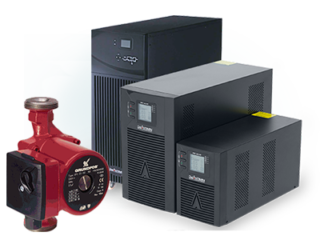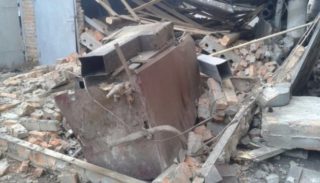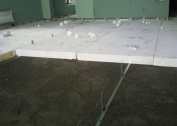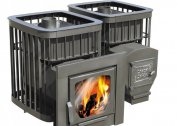In most cases, an autonomous heating system includes a circulation type pump, which is used to force the movement of heat-transfer fluid through pipes. This device requires a constant power source, more often it is a standard 220 V power supply network. However, in private homes where autonomous heating equipment is installed, an accident, a planned blackout or a power outage during network congestion can occur. As a result, heating devices may fail, and pipes may leak. An uninterrupted heater for a heating pump is a device that will not allow a serious accident to happen and will ensure further operation of the equipment during short-term network outages.
Operating principle

Uninterruptible is an apparatus that regulates the connection to a specific power source, depending on the characteristics of the power supply. If mains power fails, the UPS switches the system to a backup battery. The main functions of the device:
- Automatic connection to the battery in case of power failure from a constant source.
- Converting voltage from direct to alternating.
- Eliminating the risk of damage to the pump due to voltage fluctuations.
- Stabilization of current supply parameters.
The last function is performed only by models, the kit of which includes a stabilizer.
Uninterruptible models
On sale you can find a large number of devices that differ in design features, dimensions and price. The main classification provides for the division of equipment into three types.
Reserve
An uninterrupted heater for a heating pump provides power supply from a centralized 220 V network; in the event of a malfunction or a power outage, the equipment switches to an emergency battery. A voltage of 12 V is sent from the battery to the converter, where it is transformed into an alternating one with increasing voltage. The stabilization of the mains voltage is not performed, since the device for this purpose is not provided in the equipment constructively. A passive filter is used to block impulse noise that can damage equipment.
Foundry Interactive
These varieties are used more often; they are distinguished by increased ease of use and efficiency. The main difference between such uninterrupted units is the use of an electric power stabilizer of a standard design: it is used to equalize voltage parameters. An automatic transformer is included in the circuit, in which, when the parameters fluctuate, the corresponding winding lines are connected using an electronic switching device. As a result, the output voltage differs slightly from the rated characteristic. In addition, linear-interactive uninterruptors are equipped with converters and filter elements.
Double inverted
This design has significant differences from the two previous varieties. The rectification of the parameters of the mains voltage is provided taking into account the supply of electricity in capacitor banks. The second block inverter provides the conversion of current from direct to alternating current. The equipment capacitors themselves have a dual purpose.If the voltage parameters are too high, surpluses are supplied to these elements, and when the values decrease, the accumulated electricity serves to replenish and stabilize.
Conversion processes are controlled by a microcontroller equipped with a quartz-structure generator. Due to this, it is possible to achieve maximum accuracy of the voltage and frequency parameters. Inverter uninterruptible devices include chargers in the structure, allowing to recharge the battery.
Advantages and disadvantages
Each kind of uninterrupted source has its pros and cons. The advantages of redundant UPS include the following properties:
- increased level of efficiency;
- reduced amount of heat;
- almost silent work;
- affordable price.
The disadvantages include a long switching period, distortion of the characteristics of the output voltage and the inability to change the frequency and amplitude of the current.
The main advantages of line-interactive models:
- high efficiency;
- silent operation;
- stabilization of voltage parameters.
Like the previous version, such blocks switch for a long time, have reduced accuracy. Other disadvantages of the equipment are possible deviations in the current frequency and trapezoidal voltage.
Inverter devices are considered the most convenient and efficient in operation. Their advantages:
- extended working range;
- increased accuracy of voltage stabilization;
- instant switching;
- increased frequency accuracy;
- maximum protection against interference.
The disadvantage is the considerable cost and noise of the work.
Power selection and determination
When selecting equipment, you need to pay attention to the following characteristics:
- Power. The value is calculated by the formula P / Cos ϕ, where the first indicator is the thermal voltage, and the second is the parameter specified in the documentation for the device.
- Battery capacity.
- Maximum battery life.
- Connection of external sources and energy storage devices.
- The degree of accuracy of the output voltage.
- Switching speed to the backup source.
- The degree of distortion.
On sale you can find a large number of uninterruptible models that can be used in an autonomous heating system. The most popular are devices of the brands Skat, APC, Sven, Blazer, Teplocom, ECM and several other manufacturers.
When buying, it is advisable to give preference to equipment of well-known brands, since it is guaranteed to last several years, protecting the system from emergency situations. The price of a UPS depends on the design of the device, the materials of production, the degree of conversion accuracy, and other factors.






